The 80 Micro Young Programmer's Contest
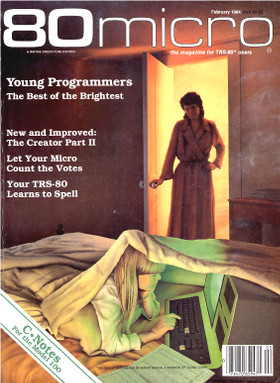
Cover of the February 1984 issue of 80 Micro containing the results of the second Young Programmer’s Contest
The entries, which numbered over 200 the first two years, were judged by the 80 Micro editorial staff based on five categories: programming elegance, documentation, originality, error-trapping, and usefulness. Most of the winning entries were written for the TRS-80 Model I and III, but there were also several for the Color Computer, and even one each for the Model II, Model 4, and Model 100.
Prizes were awarded in three age categories:
- 10 years and under
- 11 years through 13 years
- 14 years through 18 years
There were ten money prizes for winning entries:
- One Grand Prize of $300 plus publication
- Three First Prizes of $200 plus publication
- Three Second Prizes of $100 plus publication
- Three Third Prizes of $50 plus publication
In addition, there were Honorable Mentions worth a free subscription to 80 Micro plus possible publication.
Those prize money amounts didn’t include the usual payment for publication. For 80 Micro at the time, this was around $50 per printed page.
The 1982-1983 Young Programmer’s Awards
The results of the first Young Programmer’s Contest were published in the February 1983 issue of 80 Micro. Of the eleven winning entries (there was one tie), three were for the Color Computer and the rest were for the Model I or III.
All the winning entries were published in the February 1983 issue of 80 Micro.
Grand Prize
- Quest for the Key of Nightshade by David Schmidt
14 years to 18 years
- First Prize: Project Deep Dive by Michael John Lake
- Second Prize: TRS-Turtle by Larry Brackney
- Third Prize: Boxing Game by Lloyd Kupchanko
11 years to 13 years
- First Prize: Music Composer by Carl Huben (for the Color Computer)
- Second Prize: Lair of Kraken by Beth Norman (for the Color Computer)
- Third Prize: a tie between Foreign Flag Quiz by Jennifer Neidenbach and CASS-80 by Scott Steele
10 years and under
- First Prize: Super-Draw by Terry Myerson
- Second Prize: Byte-Cycles by Nathan Miller (for the Color Computer)
- Third Prize: Math Countdown by Adam Wells
There were no Honorable Mentions listed.
The 1983-1984 Young Programmer’s Awards
For the second year of the contest, the prizes and rules remained the same but the age categories were adjusted by one year:
- 11 years and under
- 12 years through 14 years
- 15 years through 18 years
80 Micro had dropped coverage of the Color Computer between the start of the contest and the publication of the results. Only three winning entries were published in the February 1984 issue of 80 Micro: the Grand Prize winner and the two non-Color Computer First Prize winners.1
Grand Prize
- Play-Byte by Stephen Roth
15 years through 18 years
- First Prize: Get Lost! by Steve Francis (for the Color Computer)
- Second Prize: Electronic Inkwell by Joseph Goldberg
- Third Prize: Dungeon of Death by Mike Erickson
12 years through 14 years
- First Prize: SINSTEP by Brian Craft
- Second Prize: Pilot+ by Nathaniel Koch (for the Model II)
- Third Prize: Haunted Mansion by Scott Bradley (for the Color Computer)
11 years and under
- First Prize: Adventure Sampler by Mark Kennedy
- Second Prize: Bar graph by Eric Bailey (for the Model 100)
- Third Prize: Flight simulator game by Tyler Kim
There were four Honorable Mentions:
- Fourth Dimension by Lloyd Kupchanko
- Key Art by Raul Acevedo
- A “matchmaking entry” by Kim Skidmore
- A “Mad Libs game” by Frank Conley
The 1984-1985 Young Programmer’s Awards
For the third (and final) contest, the rules were tightened so that all entries had to be written for the TRS-80 Model III, 4, or 4P only. This left out the Color Computer (not surprisingly) but also the Model I.
All First Prize winners were printed in the February 1985 issue of 80 Micro. The Grand Prize winner was printed in the March 1985 issue. Some of the other winners were available on the 80 Micro BBS.
Grand Prize
- Graph by Michael Leibow
15 years to 18 years
- First Prize: Fantastic Realms by Michael Lewicki and James Karls
- Second Prize: Adventure Generator by Herman Calabria
- Third Prize: Transport by Christopher Healey
12 years to 14 years
- First Prize: Graphix by Jeff Reifman
- Second Prize: Operator by Steven Whysong
- Third Prize: An emulation of a Turing Machine by Ken Buckley
11 years and under
- First Prize: Number Eaters by Jeffrey Zare
- Second Prize: Drawarama by Stephen Lardieri
- Third Prize: Conversion by Eric Mullenbruch (for the Model 4)
There were four Honorable Mentions:
- 3-D Maze by Lee Periolat
- Gladiator by Jeff Reifman
- Forms Management program by Mariam Tariq
- Concentration by Stacy Lamb
-
The contest rules stated that all winning entries would be published, which only happened the first year. But were all the winners still paid for publication? My guess is that they were. I know of several people who 80 Micro paid for accepted but never published articles, which was (and is) very unusual for the publishing industry. ↩︎
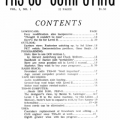
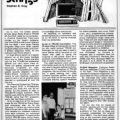
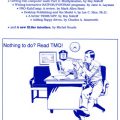
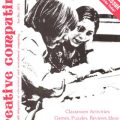










Adam Wells says:
Wow, someone who remembers this! That was me, Adam Wells, who got third place in the 10-and-under group in 1983 for Math Countdown. I did win $50 plus my program was published in 80 Micro. I got a couple of letters from people who had tried to type it in and had had problems with it.
My local newspaper found out about this and ran a short human-interest story on me and my family, with a photo of me. Later, that newspaper story was, strangely, picked up by the tabloid Weekly World News, which then ran a story about me and how weird it was that a 10-year-old boy would rather play on his computer than throw a baseball (I was ahead of my time). I would have never known about this, except that my aunt happened to buy a copy of it that week.
Thanks for the memories! I should load up a TRS‑80 emulator and try to run my old program Math Countdown. As I recall, it wasn’t super exciting. There was a picture of a rocket on the screen, and you had to answer simple math problems correctly in order to get the countdown to advance. When you got to zero, you were rewarded with an animation of the rocket taking off.